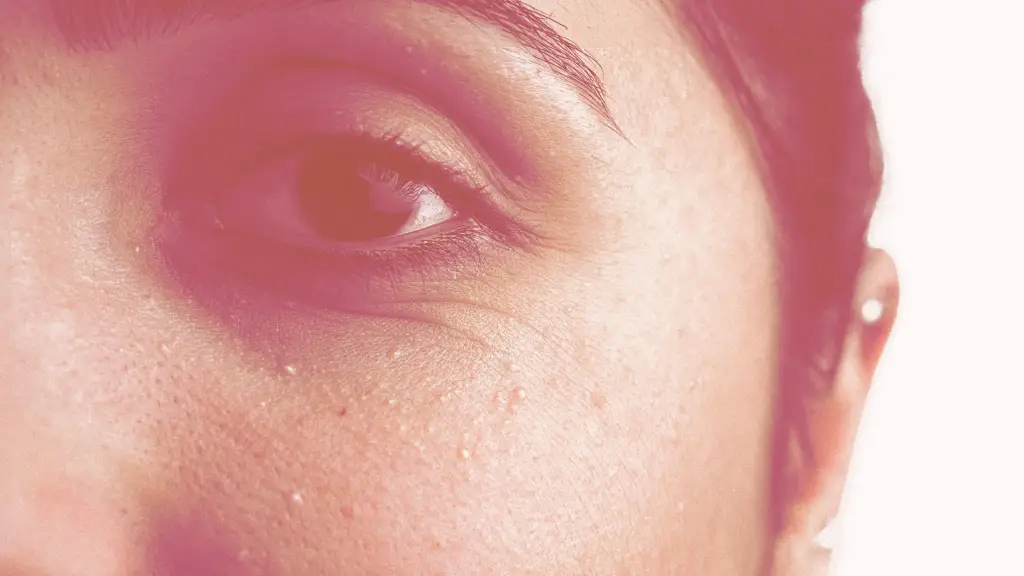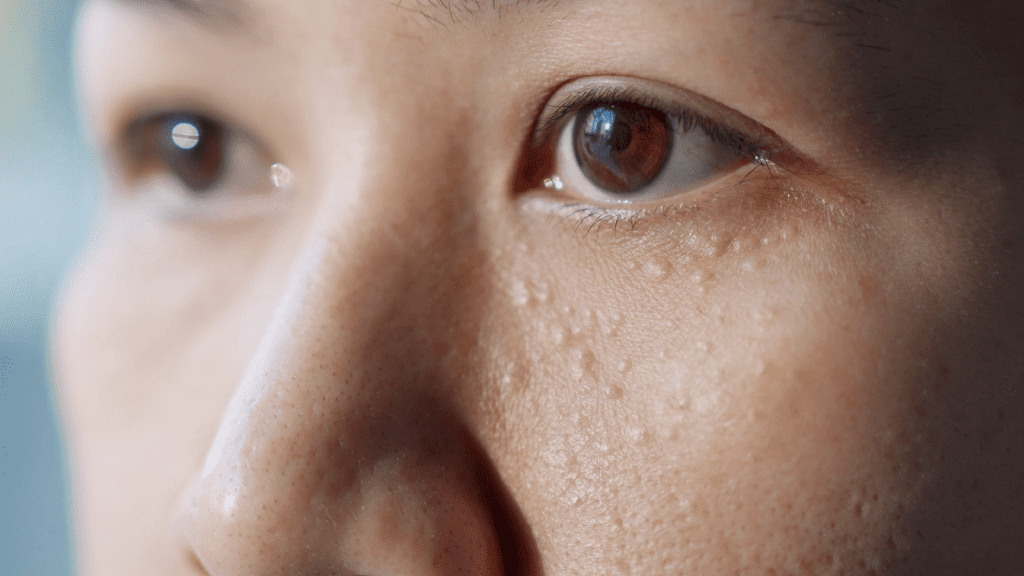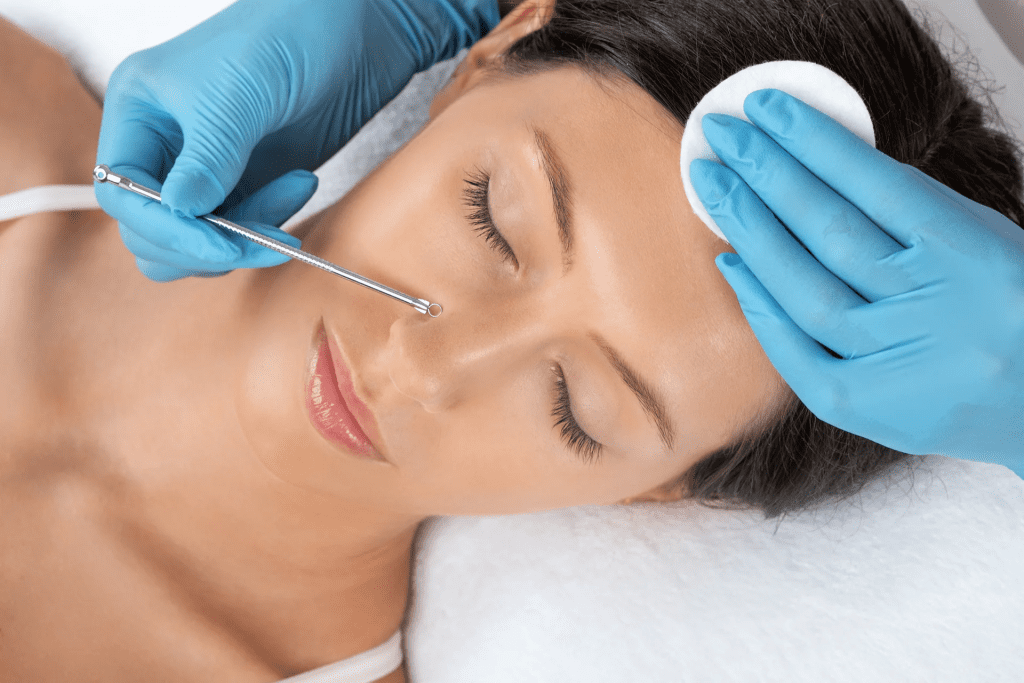Milia are those tiny, stubborn white bumps that seem to pop up out of nowhere, and no matter how hard you try, they just won’t budge. They might look like pimples, but milia are quite different. If you’ve been struggling with these unpoppable bumps, you’re not alone, and the good news is that there are ways to get rid of them safely. Let’s dive into what causes milia and how you can tackle them effectively.
What Are Milia and Why Do They Appear?

Milia are small cysts that form when keratin, a protein found in the skin, becomes trapped under its surface. Unlike pimples, which result from clogged pores, milia form when skin cells don’t shed properly. These white bumps are harmless but can be frustrating if they cluster on your face, especially around the eyes, nose, or cheeks.
Anyone can develop milia, from infants to adults. They’re more common in people who have suffered sun damage or those with certain genetic conditions. But they can also appear for no apparent reason. While milia can be annoying, they’re not harmful, and there are ways to manage and treat them effectively.
Common Causes of Milia Formation
Understanding the causes of milia can help you prevent and treat them more effectively. Here’s what typically leads to their appearance:
- Sun Damage: Prolonged exposure to the sun can thicken the skin, making it more difficult for dead skin cells to shed properly. This can result in the formation of milia.
- Heavy Skincare Products: Thick creams, oily lotions, and makeup that clog your pores can also contribute to milia formation. It’s important to choose non-comedogenic products that won’t block your skin’s natural processes.
- Skin Trauma: Milia often appear after the skin has experienced some kind of injury or irritation, such as burns, blisters, or even after using certain topical medications.
- Genetics and Skin Conditions: Some people are simply more prone to developing milia due to their skin type or genetic conditions like rosacea or certain syndromes.
How to Prevent Milia from Forming
Preventing milia can be tricky because they can appear without any obvious triggers. However, incorporating some simple habits into your skincare routine can make a big difference in reducing your chances of developing these bumps.
1. Use Retinoids
Retinoids are derived from vitamin A and are widely used in skincare to promote cell turnover. By encouraging your skin to shed dead cells more efficiently, retinoids can help prevent keratin buildup, which leads to milia. Products like Differin Gel or SkinBetter AlphaRet Night Cream contain retinoids and are great over-the-counter options.
Tip: If you’re new to retinoids, start with a lower concentration to avoid irritation, and be sure to apply sunscreen during the day since retinoids can make your skin more sensitive to the sun.
2. Exfoliate Regularly
Exfoliating your skin helps remove dead skin cells and keeps pores clear, which can prevent milia. Alpha-hydroxy acids (AHAs) like glycolic acid are great for this purpose. You can incorporate exfoliating cleansers or toners into your routine to maintain smooth, clear skin.
Tip: Don’t over-exfoliate! Doing so can irritate your skin and potentially worsen the condition. Stick to exfoliating 2-3 times a week for best results.
3. Choose Non-Comedogenic Products

To avoid clogging your pores, always opt for non-comedogenic skincare products. These are specially formulated to not block your skin’s pores, reducing the risk of developing milia or acne.
Look for brands that cater to sensitive skin, such as Cetaphil or La Roche-Posay, which offer gentle, non-comedogenic moisturizers and cleansers.
How to Get Rid of Milia Safely
If milia have already made an appearance, don’t worry—there are ways to get rid of them. However, resist the temptation to pop them yourself, as this can lead to scarring, infection, or worsening of the condition. Instead, try these methods:
1. Chemical Peels
Chemical peels use acids like glycolic or salicylic acid to exfoliate the top layer of skin, allowing the milia to come to the surface and shed naturally. You can get these peels from a dermatologist or try milder over-the-counter options at home.
2. Topical Treatments
Topical treatments containing retinoids or exfoliating acids can help soften the bumps and make them easier to remove. Products like La Roche-Posay Effaclar Medicated Acne Cleanser or creams containing salicylic acid are good options.
3. Professional Extraction

If at-home methods don’t work, it’s best to consult a dermatologist. Dermatologists can use sterile tools to safely extract milia without causing damage to the surrounding skin. They may also use lasers or electrosurgical procedures to treat stubborn cases of milia that won’t respond to topical treatments.
Tip: Never attempt to extract milia yourself with unsterilized tools or excessive force, as this can lead to scarring or infection.
How to Maintain a Milia-Free Complexion
Once you’ve managed to get rid of milia, you’ll want to take steps to prevent them from returning. Here’s how:
- Keep Up with a Gentle Skincare Routine: Continue to use exfoliants and retinoids as part of your regular routine to promote healthy skin turnover.
- Sunscreen is a Must: Protecting your skin from sun damage is crucial in preventing milia. Choose a broad-spectrum sunscreen that’s non-comedogenic to avoid clogging your pores.
- Hydrate Without Overloading: Opt for lightweight, hydrating moisturizers that won’t clog your pores. Gel-based moisturizers are often a good choice for milia-prone skin.


